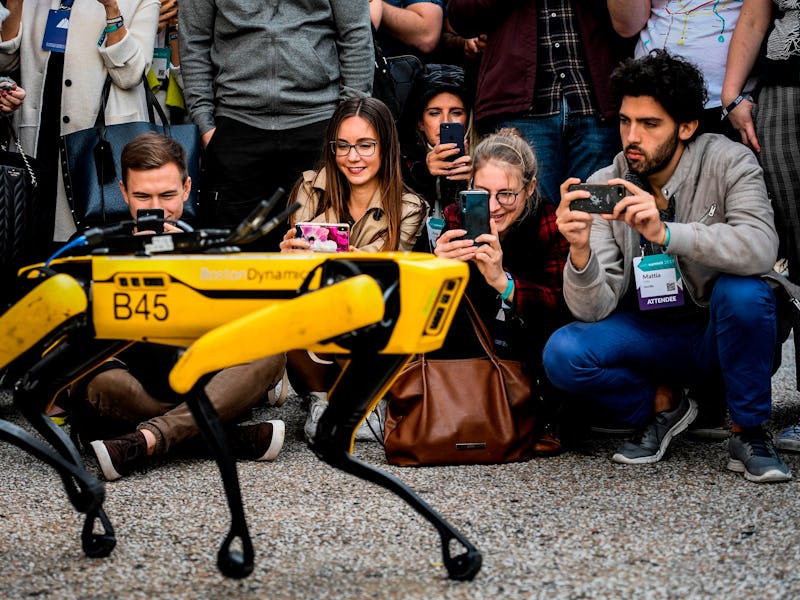Boston Dynamics' robotic dog could be yours for a very, very high price
These viral robots have ranked up big YouTube numbers for years. Now, they're about to start their day jobs.

Their robots have gone viral for years, prompting nightmares and dread to the extent that they’ve gotten their own Black Mirror episode. And now you can purchase a Boston Dynamics Spot robot for yourself, for a mere $74,500. You can buy one here.
Marc Raibert, chairman and founder of Boston Dynamics, noted in a statement that the commercial sales were the result of “decades” of work. “At Boston Dynamics, we have spent decades creating and refining robots with advanced mobility, dexterity and intelligence because we believe agile robots can solve a broad range of real world problems,” he said.
“The combination of Spot’s sophisticated software and high performance mechanical design enables the robot to augment difficult or dangerous human work. Now you can use Spot to increase human safety in environments and tasks where traditional automation hasn’t been successful.”
Three and a half feet long and a little under three feet tall (2.7 feet) when standing, the Spot Explorer, as it is formally known, comes with a 360-scope of vision that can extend thirteen feet. Meant for civilian use, it can only hit 3.5 MPH, essentially a quick walk for humans. But when it moves, it can do so on up to a 30 percent incline, meaning it can tackle unconventional terrain.
Originally spun off MIT in 1992, the Waltham, Massachusetts-based Boston Dynamics first began working exclusively for the American military. After some time making naval training systems, funding from the experimental wing of America’s military, DARPA, allowed the company to eventually move on to what would make it famous: robot dogs. The company’s first go at the concept, developed in 2005, was known as BigDog.
BigDog was built with a clear purpose: to act as a pack mule for troops in combat situations. Boston Dynamics was imagining rugged terrain, like the mountain of Afghanistan, where cars weren’t practical and troops would need help carrying food, weapons, medicine, and anything else. Promoting modifications around the BigDog in 2006, Raibert told New Science and others that the robot could handle inclines up to 35 degrees.
Nearly a decade later, having been purchased by Google X (which would later become X, under Google’s parent company Alphabet), the BigDog project washed out of the military for being too noisy. But the company was quickly finding a new audience: the Internet, which would freak out every time it posted one of its robots dancing, opening doors, or generally doing something human-like that would bring in millions of views, and eventually inspiring the evil robot dogs at the core of the Black Mirror episode “Metalhead”.
As the BigDog project phased out, the similar Spot robot took its place. No longer concerned with military-grade stealth, the robot was instead surveying construction sites. In a press statement, Boston Dynamics points to several more uses: data-capture in the oil and gas industry, helping NASA’s Jet Propulsion Laboratory navigate subterranean surfaces.
The Inverse Analysis: The Spot Explorer is likely not coming to a workplace near you. The high price point makes it impractical to all but a few institutions, like high-end construction firms, energy companies, and government agencies. But just seeing out in the world, doing more than dancing to “Uptown Funk,” is surely a sign of progress.